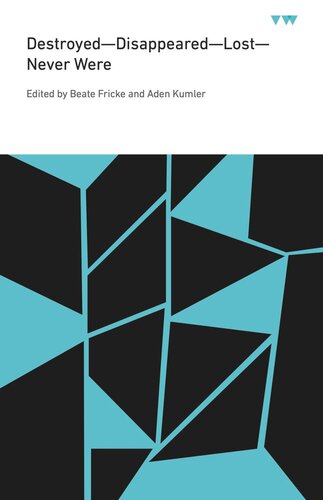

Most ebook files are in PDF format, so you can easily read them using various software such as Foxit Reader or directly on the Google Chrome browser.
Some ebook files are released by publishers in other formats such as .awz, .mobi, .epub, .fb2, etc. You may need to install specific software to read these formats on mobile/PC, such as Calibre.
Please read the tutorial at this link: https://ebookbell.com/faq
We offer FREE conversion to the popular formats you request; however, this may take some time. Therefore, right after payment, please email us, and we will try to provide the service as quickly as possible.
For some exceptional file formats or broken links (if any), please refrain from opening any disputes. Instead, email us first, and we will try to assist within a maximum of 6 hours.
EbookBell Team

4.1
90 reviewsTo write about works that cannot be sensually perceived involves considerable strain. Absent the object, art historians must stretch their methods to, or even past, the breaking point. This concise volume addresses the problems inherent in studying medieval works of art, artifacts, and monuments that have disappeared, have been destroyed, or perhaps never existed in the first place.
The contributors to this volume are confronted with the full expanse of what they cannot see, handle, or know. Connecting object histories, the anthropology of images, and historiography, they seek to understand how people have made sense of the past by examining objects, images, and architectural and urban spaces. Intersecting these approaches is a deep current of reflection upon the theorization of historical analysis and the ways in which the past is inscribed into layers of evidence that are only ever revealed in the historian’s present tense.
Highly original and theoretically sophisticated, this volume will stimulate debate among art historians about the critical practices used to confront the formative presence of destruction, loss, obscurity, and existential uncertainty within the history of art and the study of historical material and visual cultures.
In addition to the editors, the contributors to this volume are Michele Bacci, Claudia Brittenham, Sonja Drimmer, Jaś Elsner, Peter Geimer, Danielle B. Joyner, Kristopher W. Kersey, Lena Liepe, Meekyung MacMurdie, and Michelle McCoy.